Comprehensive Women's Care
We will partner with you to provide all services breast related, whether benign, malignant or cosmetic. Our expert team of board certified surgeons and staff are here to guide you through every step of the process.
Breast Cancer Surgery
The current treatment of breast cancer involves a combination of surgery, chemotherapy, anti-hormonal therapy, and immunotherapy. When treating the cancer with the intent of cure, surgery is the first line of treatment with adjuvant therapy added with the intent of preventing recurrence. Surgical treatment of breast cancer focuses on eradicating the cancer from the breast, and sampling the lymph nodes from the axilla to stage the disease and predict its behavior.

Breast Conservation or Lumpectomy
This option exists when the tumor is small enough to be removed with safe margins of normal tissue around it without deforming the breast. This method can be combined with reconstruction, or oncoplastic techniques, as well to help fill in any defects and avoid deformity of the cancer breast and achieve better symmetry with a reduction or lift on the opposite breast if desired. This option preserves the non cancerous breast tissue, but usually requires Radiation Therapy after surgery.

Breast Cancer Surgery
The current treatment of breast cancer involves a combination of surgery, chemotherapy, anti-hormonal therapy, and immunotherapy. When treating the cancer with the intent of cure, surgery is the first line of treatment with adjuvant therapy added with the intent of preventing recurrence. Surgical treatment of breast cancer focuses on eradicating the cancer from the breast, and sampling the lymph nodes from the axilla to stage the disease and predict its behavior.
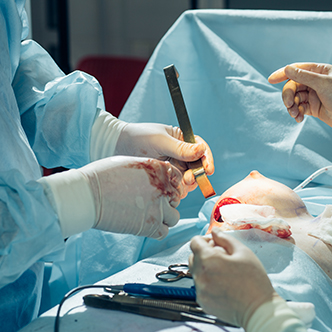
Mastectomy
This option involved removal of the entire breast including the areola and the nipple, but usually with preservation of the overlying skin except with the exception of when the cancer is too close to the skin.
The preservation of skin makes breast reconstruction much easier and with improved outcomes both functionally and aesthetically, allowing the incisions to be placed in more manageable locations and provide patients with a greater sense of normalcy.
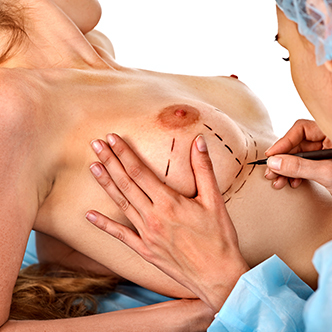
Nipple Sparing Mastectomy
Saving the nipple and areola can be performed in selected cases depending on the size and location of the tumor. This advanced technique helps preserve a more natural look after mastectomy by maintaining the native nipple and areola, thereby improving the cosmetic outcomes and preserving one’s sense of self.
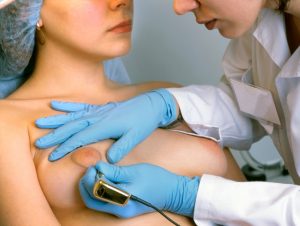
Breast Reconstruction
Breast cancer resection often involves mastectomy with the removal of the entire breast tissue, this leaves a large space with volume loss and deformity. The goal of reconstruction is to fill this loss and treat the deformity creating an improved sense of self and aesthetic outcome with symmetry with the noncancerous breast. Reconstruction empowers the cancer patient to restore their confidence and ability to resume normal life activities and long term plans. There are methods to treat not only mastectomy patients but also rearrange tissue and fill defects created from lumpectomy. Furthermore, patients should not worry about insurance coverage for reconstruction as it is covered by almost all insurance plans. At the Breast Center of Beverly Hills we will help guide you through the entire process and help with all insurance claims and authorizations.
Multiple options for reconstruction exist including
- Implant based reconstruction
- Implant plus autologous tissue reconstruction
- Autologous reconstruction (using patient’s own tissue rather than implant)
Each of these options will be discussed in depth upon consultation with our expert team and review the benefits and disadvantages of each in general as well as particular to each patient. In general the options are discussed below.

Sentinel Lymph Node Biopsy
Removal of lymph nodes in the axilla is used to help for staging and to help predict behavior of the disease and treatment options. The lymphatics serve to drain the metabolic products and cellular fluid back into the bloodstream. The most relevant complication of removal of lymph nodes is lymphedema, which results in faulty drainage of the tissue, in this case the arms. This results in build-up of fluid in the affected arm, a condition known as “Lymphedema”.
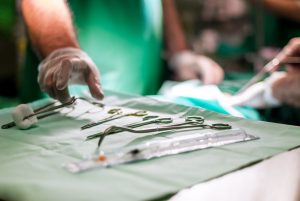
Implant based reconstruction
This method is usually done at the same time as the mastectomy or lumpectomy. In some cases the reconstruction can be performed with the final implant to start (straight to implant reconstruction), although in most cases a tissue expander is required as an initial stage of reconstruction, followed by exchange to final implant at a later stage. A tissue expander is very similar to a saline implant except it has a port that allows for continued filling of the expander until the patient selects the size that he would like to be. This has many benefits including the option to select the exact size he would like. Additional benefits include decreased tension on the post mastectomy skin which often results in improved healing and lower chance of complications like skin loss and need for additional surgeries to remove dead skin and replace the implants. Tissue expanders is particularly useful when there is not enough breast skin to place the final implant. Dr. Som facilitates the expansion of the breast skin to create the final size the patient would like and get the ultimate result that would make them happy.
This method of reconstruction is the least additional operating room time at the time of mastectomy, adding about 1 hour. It also has the least recovery time and quickest return to work and daily activities.
Additional stages of this reconstruction include a second stage where the expander is replaced with a permanent implant. This is a one hour outpatient procedure with minimal recovery time that is often performed in an ambulatory surgery center which is much easier for patients to under the procedure while maintaining excellence of care.
Implant based reconstruction is the most common form of reconstruction – being utilized ~70% of reconstructions in the United States, and even higher numbers outside of the United States. Contact us to learn more.
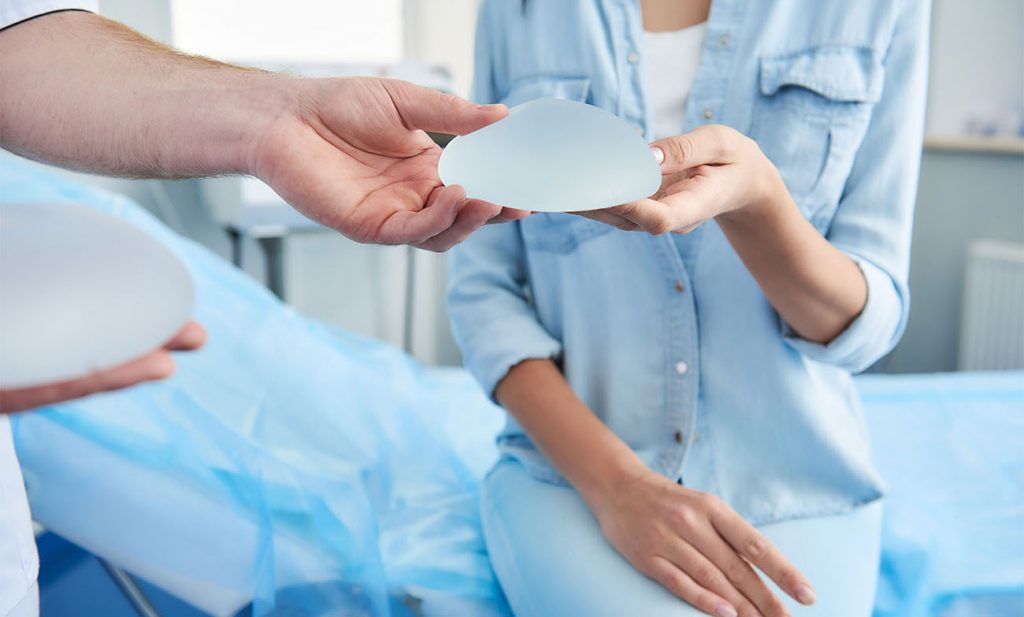
Implant plus autologous tissue reconstruction
This form of reconstruction is a combination of using one’s own tissue in addition to an implant. It was traditionally used in patients that had previously undergone radiation or were planning to undergo radiation therapy. However, nowadays thanks to newer technologies and advancement in our methods of reconstruction this method is reserved for a salvage or back up procedure when implant based reconstruction alone has failed (very rare). However, we always have a plan B to help.
Although Dr. Som rarely has to use this option, they trained with one of the pioneers of this procedure Dr. Luis Vasconez and are here to discuss your options. Contact us to learn more.

Autologous reconstruction
This method of reconstruction uses one’s own tissue only, without the use of implants. The benefits include not having to have implants, however, has several important disadvantages that makes this less used option that implant based reconstruction. These include greater operative time – adds about 3-6 hours depending on method. Also, has greater recovery due to the second surgery site as well as longer hospital stay. Where implant based reconstruction does not add any time to hospital stay (typically 1-2 days for mastectomy), this method of reconstruction creates a minimum of 3 days which can even be extended up to 7-10 days depending on the form of reconstruction and postoperative course. Most commonly tissue is taken from the tummy area. This can be done in 2 forms either pedicled trans rectus abdominus myocutaneous flap reconstruction (Pedicled TRAM) or a free TRAM. The first form involved rotating the tissue from the tummy area up into the chest and leaving the blood vessel that keeps it alive intact from above. The free TRAM includes microscopic surgery where the blood vessels are identified under a microscope, then cut and transposed to the chest where they are reconnected (anastomosed) to the blood vessels in the chest. This can also add the possible complication of a hernia at the site where the tissue is removed as well as increased pain as part of the recovery process.
This surgery can have additional stages for touch ups as needed, however, is usually a one stage reconstruction. Not all patients are candidates for this form of reconstruction. This can be discussed upon consultation with our expert team. Contact us to learn more.

Lymphedema Treatment
As mentioned above Lymphedema can occur from the removal of lymph nodes which result in disruption of the normal return of lymphatic fluid from the arms. It is a complex medical issue that until recently did not have great curative options. Recent advances and trials have proven two surgical options for this problems.
- Lymph node transplant – Using microscopic techniques, our expert team will identify a viable site to transplant lymph nodes and restore the normal lymphatic flow to the affected areas (usually the arms). Dr. Som has trained extensively in microsurgery to help optimize patient outcomes and success of this procedure.
This surgery typically is 3-4 hours and can even be performed in an outpatient setting in some cases. - Lympho-venous Anastomosis – Also using microscopic techniques, our expert team will create new connections between the congested or back-up lymphatics causing the lymphedema, and the venous system. This helps redirect the blockage and thereby improve lymphedema. This procedure is typically 3-4 hours and can often be performed in an outpatient setting.

Schedule a Consultation
Dr. Som will discuss your situation and determine the best option for your treatment
